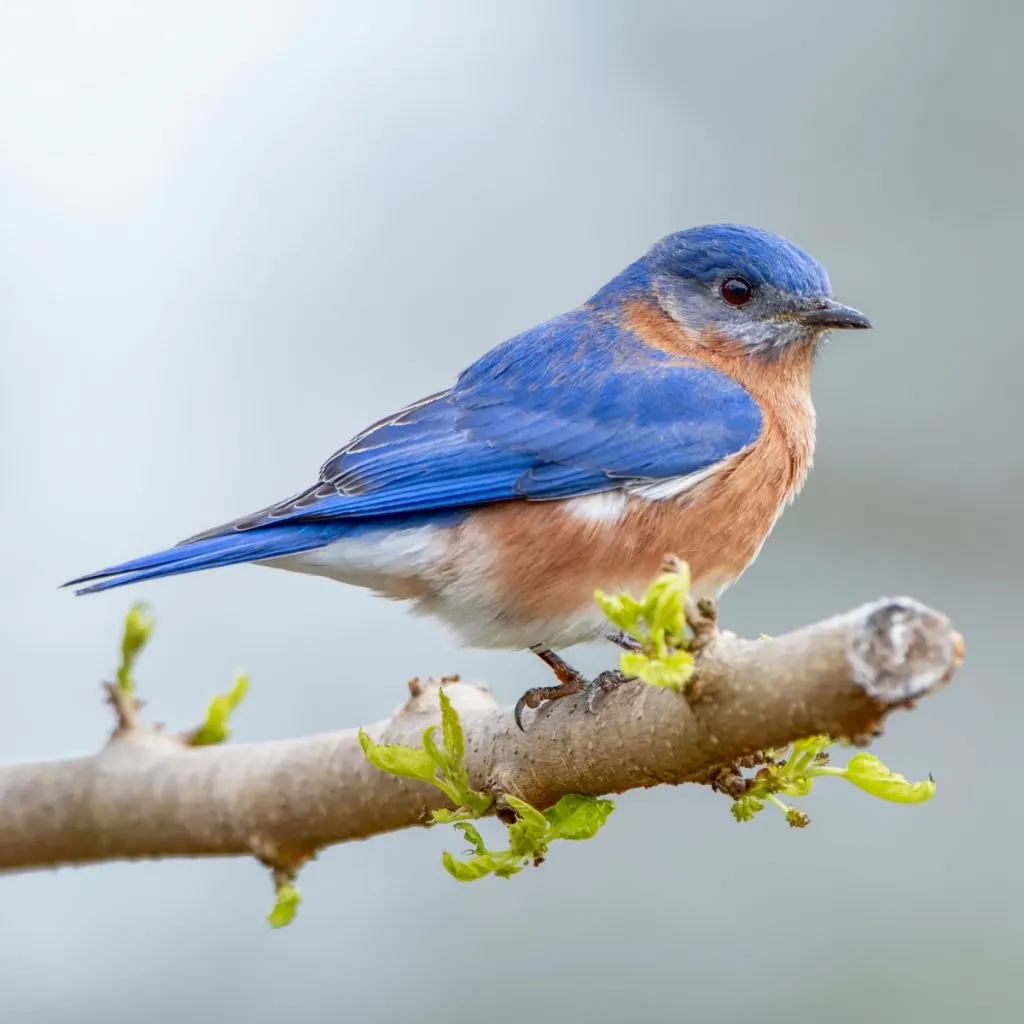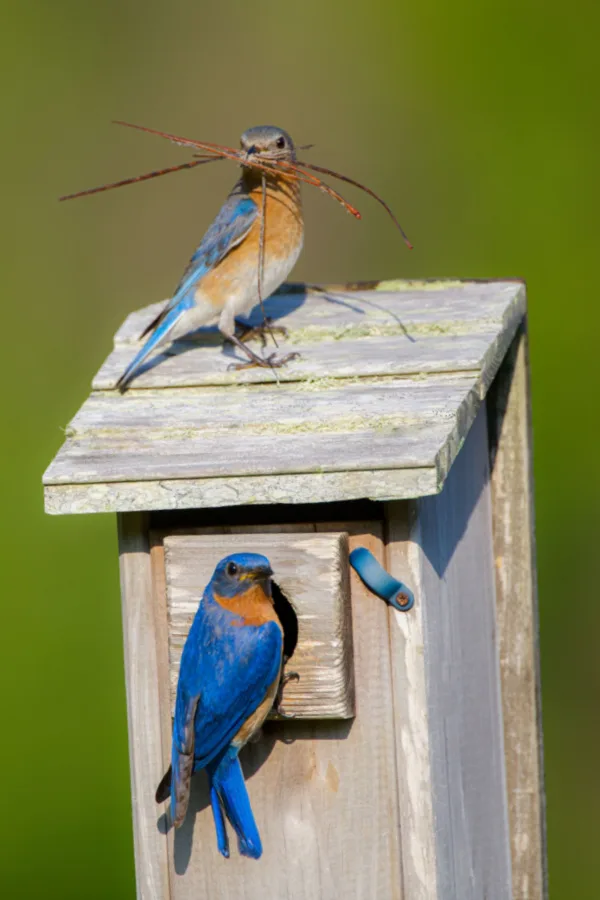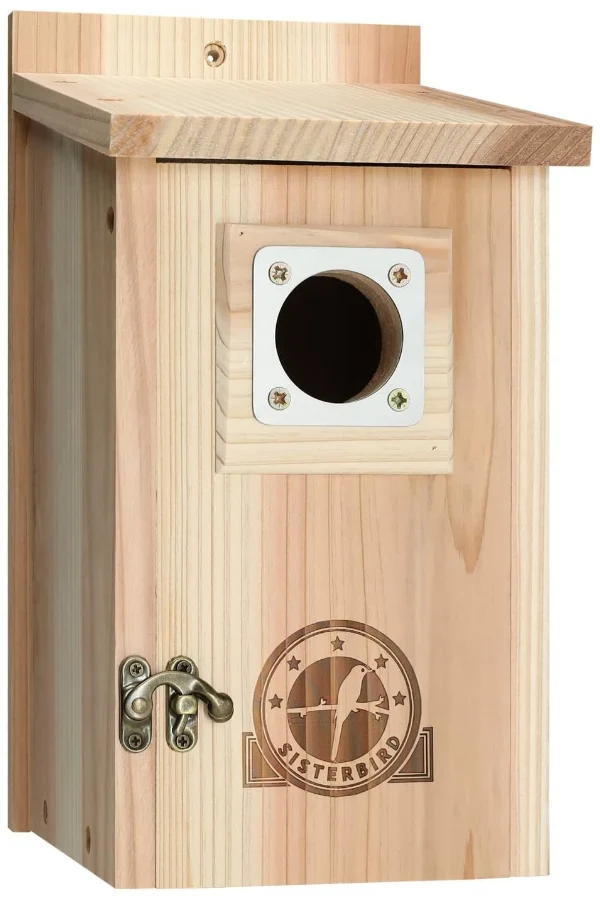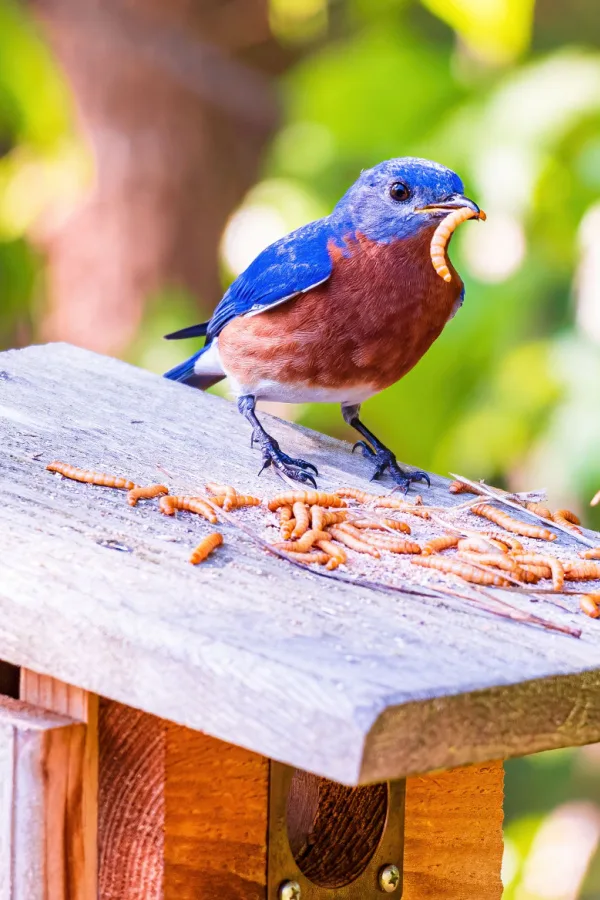If you are looking for the perfect natural way to help control insects and pests in your garden and flowerbeds this year, you need to not only attract bluebirds to your landscape – but get them to stay and live in your yard all season long!
Bluebirds certainly are a treat to see flying about. With their vibrant deep blue caps and backs and their reddish brown bellies, they really stand out among the many neutral-colored birds. Even the females, while maybe not as showy as males, still feature a beautiful light blue tint.
But the main reason why gardeners in particular love having bluebirds around is because they love to dine on some of the most devastating garden insects and pests. Backyard invaders such as beetles, grubs, spiders, ants, grasshoppers, crickets, termites, and even mosquitoes are at the top of a bluebird’s dinner menu.

Not only will they eat adult pests, bluebirds also consume the larva of insects as well. Getting rid of the larva helps to eliminate future generations of problems with bothersome pests. At the same time, these feathered friends pass on eating earthworms, one of the soil’s most beneficial creatures.
The good news is that besides having plenty of insects and pests available, there are a few other ways to attract bluebirds to your property. Not only will these simple tips have them flocking to your home, but it will also make them want to stick around for the entire gardening season as permanent residents!
How To Get Bluebirds To Stay In Your Yard
If you live in a location with cold winters, bluebirds will likely migrate South during the colder months. However, if you live in the Southern part of the United States or in South America, the birds usually stay put the whole year-round.
Once late February or early March comes along, bluebirds will start to come back looking for a place to spend the spring and summer months. Because of this, late winter or very early spring is the best time to get your property in tip-top shape. That is – at least as far as bluebirds are concerned!
There are two main key factors that bluebirds will be looking for when they are trying to find their permanent summer home. The first is a safe place to live. And the second? It’s to have plenty of nearby food and a source of water nearby.

If you are able to get these two factors in place before the birds arrive, there is a great chance that bluebirds will soon be calling your property their home for the entire season!
Providing A Safe Space – How To Attract Bluebirds And Get Them To Stay In Your Yard
When picking a home, bluebirds are first looking for a place of safety and security. Their nesting location is where they will lay their eggs as well as raise their young. And they need that space to be safe for them!
Bluebirds aren’t against nesting in natural spaces like inside old trees or bushes. However, they will also happily live in a provided birdhouse as well. And providing them with this option is one of the best ways to get them to stick around.
The most common type of bluebird house is called a saltbox house. They can be found in a wide variety of options and styles, but there are a few things you want to make sure a bluebird saltbox house has – starting with a slanted roof for easy rain drainage. (Affiliate Product Link: SISTERBIRD Bird Houses)

The house should also have a small 1.5-inch opening about 5 inches up from the bottom of the birdhouse floor. Salt boxes don’t include a perch at the opening and this is on purpose. The perches are not necessary for bluebirds to enter and leave the house. In addition, the lack of a perch makes it harder for predators to get inside.
Since bluebirds are cavity dwellers, they don’t require a ton of floor space. In fact, the cozier the house the better. This is because too large of a footprint can cause a bluebird to look elsewhere to make their nest. A house that has around 5×5 inches or 6×6 inches of available floor space is ideal.
Where To Located The Birdhouse – How To Attract Bluebirds And Get Them To Stay In Your Yard
Besides having the correct type of birdhouse available for bluebirds, you want to make sure to put it in a safe location as well. It might be tempting to place the birdhouse in a tree or bush. However, it’s better to put it on a stand-alone post or pole to make it harder for predators to reach.
Place the birdhouse about 6 feet off of the ground for the best safety. If you live in a location where there are raccoons, minks, opossums or other types of predators that frequent your yard, install a pole baffle to make it harder for them to climb. (Affiliate Product Link: Predator Guard Squirrel Baffle)

One thing you will see quite often is people installing bluebird houses on fence posts. Ideally, this is not a great option. Fence posts are usually not high enough, and it will allows predators easy access to rob the nests.
Providing Tasty Treats – Attract & Feed Bluebirds
Now that you have provided your bluebirds with a safe place to nest, it’s time to help cover the other aspect of attracting bluebirds: their food. Thankfully, most of the annuals and perennials you grow in your garden are perfect for drawing in the insects and pests bluebirds need and love.
In addition, any type of trees, bushes, and shrubs also provide bluebirds with places to hunt for insects. But in addition to their normal pests, you can also help provide them with additional sources of nutrients to attract them even more. This can be especially helpful in very early spring when there are not a lot of insects around yet.
Other Sources Of Nutrients
Bluebirds will visit bird feeders, but they prefer softer bird feeds like suet cakes, dried fruit, and shelled sunflower seeds. (See, “How To Make Homemade Bird Suet”)
But if you really want to attract bluebirds early on when they hunt for a space, they absolutely love mealworms! Mealworms are a great supplement for a lack of insects in early spring. They are a wonderful source of protein, vitamin B, fiber, and other essential nutrients bluebirds need.

In addition, they provide the bluebirds with the energy they need to create a nest and lay eggs. (Affiliate Product Link: UCM Group 17.6oz Dried Mealworms for Wild Birds)
Beyond food, bluebirds also need a source of fresh water. Water is required to keep the birds energized and hydrated. If there is not an adequate source nearby, bluebirds are likely to look elsewhere for their permanent residence.
A small bird bath can be great for providing the water bluebirds need. It’s important to not overlook this requirement because it really can be a make or break for bluebirds! Affiliate Link: Bronze Weather Resistant Bird Bath
Here’s to attracting and feeding bluebirds this year – and having far less insects and pests in your garden, flowerbeds and yard as a result!
Follow Our Facebook Page For Even More Great Tips! Simple Garden Life Facebook Page
Simple Garden Life is a website dedicated to keeping gardening fun, simple and enjoyable! We publish two new articles each week along with a new garden podcast episode every two weeks. This article may contain affiliate links.
